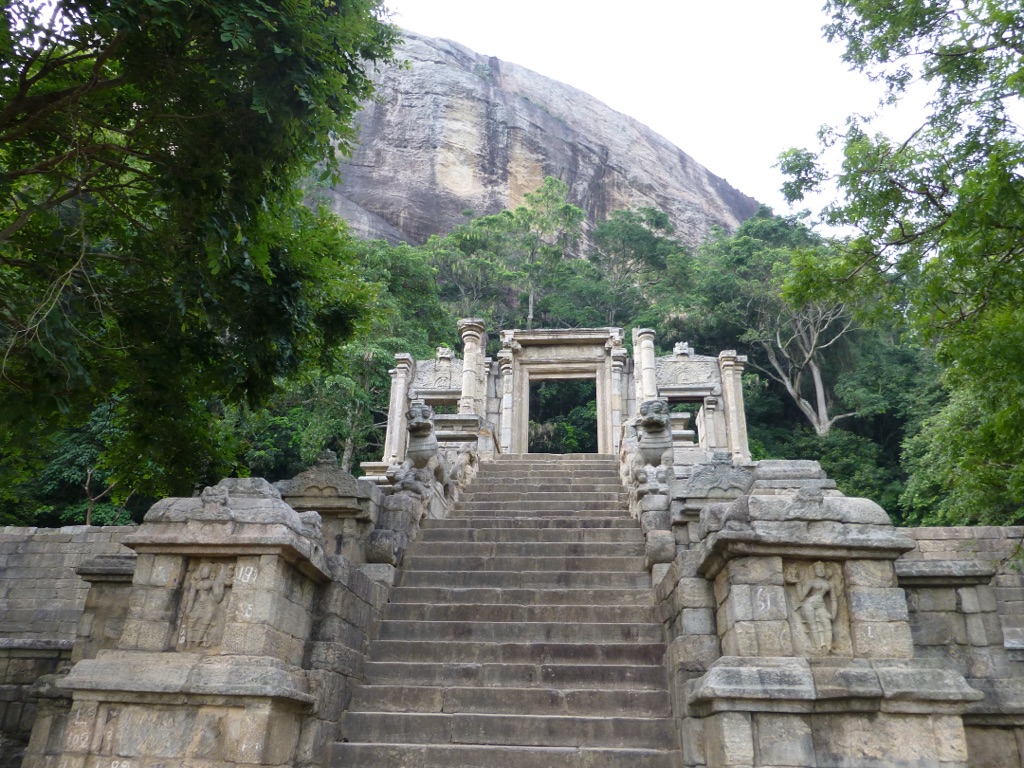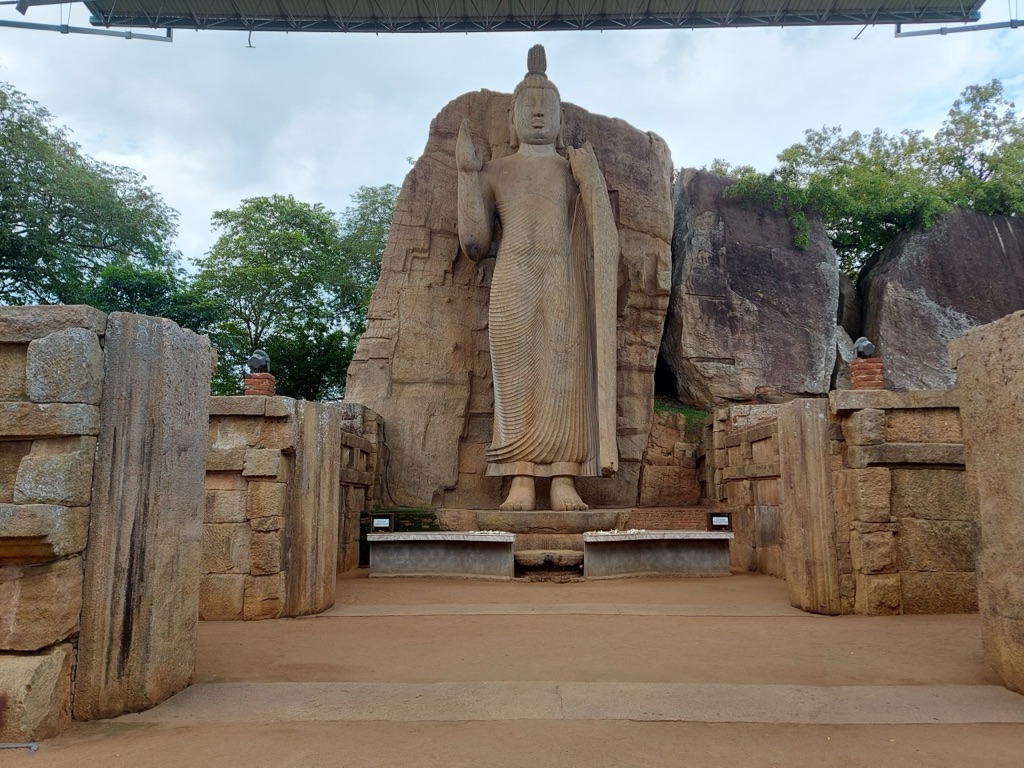The Avukana Buddha Statue stands as a magnificent example of ancient Sri Lankan stone sculpture. Carved out of a granite rock face during the 5th century AD, this statue reaches a height of approximately 40 feet, making it one of the tallest ancient Buddha statues in the world. It depicts a standing Buddha in the asisa mudra, a gesture of blessing or instruction. The statue’s precise carving and well-preserved details offer a glimpse into the skill of the artisans of the time. The Avukana Buddha is a significant symbol of the cultural and religious history of Sri Lanka and continues to be a site of pilgrimage for Buddhists from around the world.
Sinhalese Kingdom
The Sinhalese Kingdom, rooted in the rich tapestry of Sri Lankan history, traces its origins back to the arrival of Prince Vijaya from India in 543 BC, marking the beginning of the Sinhalese civilization. This event, steeped in myth and legend, heralds the establishment of the Anuradhapura Kingdom, the first Sinhalese kingdom, which flourished as a significant urban center and a bastion of power until its decline in the late 10th century AD. The Sinhalese civilization, through its timeline, has witnessed the rise and fall of several kingdoms, with notable capitals at Anuradhapura, Polonnaruwa, Dambadeniya, and finally, Kandy, which remained the last independent Sinhalese kingdom until it fell to the British in 1815.
Religion played a pivotal role in the Sinhalese Kingdom, with Buddhism being introduced in the 3rd century BC by Mahinda, the son of the Mauryan Emperor Ashoka of India. This introduction marked a significant turning point, as Buddhism became intertwined with the Sinhalese identity, influencing its culture, art, and governance. The construction of massive stupas, the establishment of the Buddhist clergy, and the patronage of Buddhist art and architecture became hallmarks of Sinhalese civilization.
Throughout its history, the Sinhalese Kingdom experienced numerous major moments, including the construction of sophisticated irrigation systems and reservoirs, such as the Parakrama Samudra, which underscored the advanced technological and engineering prowess of the Sinhalese. These feats facilitated a thriving agricultural society, which became the backbone of the kingdom’s economy and sustenance.
The social and daily life in the Sinhalese Kingdom was intricately linked with agriculture, religious observances, and community festivals. Rice cultivation was central, around which the annual calendar revolved, including the celebration of the Sinhala and Tamil New Year. The caste system, influenced by Indian traditions, played a role in societal structure, although it was more fluid in the context of Sri Lanka.
The Sinhalese Kingdom was ruled by a succession of monarchs, with notable rulers including Dutugemunu, who reigned from 161-137 BC and is celebrated for unifying the island under a single ruler by defeating the Tamil king Elara. Another significant figure was Parakramabahu the Great (1153-1186 AD), under whose reign the Polonnaruwa Kingdom reached its zenith, exemplifying a golden age of culture, architecture, and irrigation.
Wars and battles were frequent in the history of the Sinhalese Kingdom, often against invading Indian kingdoms and later, European colonial powers. The Chola invasions in the 10th and 11th centuries were particularly impactful, leading to the temporary decline of Sinhalese power and the shift of the capital to Polonnaruwa. The arrival of the Portuguese in the 16th century, followed by the Dutch, and finally the British, introduced new military challenges, culminating in the loss of sovereignty in 1815.
The Sinhalese Kingdom’s legacy is a testament to its resilience, cultural richness, and the enduring spirit of its people. The remnants of ancient cities, stupas, and reservoirs stand as silent witnesses to a once-mighty civilization that thrived on the island of Sri Lanka. The kingdom’s contribution to Buddhist culture, art, and architecture continues to be celebrated, preserving a unique heritage that remains integral to the Sri Lankan identity.
In conclusion, the Sinhalese Kingdom, with its deep-rooted history, religious significance, and cultural achievements, represents a significant chapter in the annals of South Asian civilizations. Its story, from the arrival of Prince Vijaya to the eventual fall to British colonial rule, encapsulates a saga of triumph, resilience, and the enduring legacy of a civilization that shaped the destiny of Sri Lanka.

Yapahuwa
Yapahuwa was a one-time capital of medieval Sri Lanka, known for its remarkable architectural qualities and its strategic military significance. Perched on a massive 90-meter rock boulder in the style of the Sigiriya rock fortress, Yapahuwa was home to the palace and military stronghold of King Buvanekabahu I in the 13th century. The site is…

